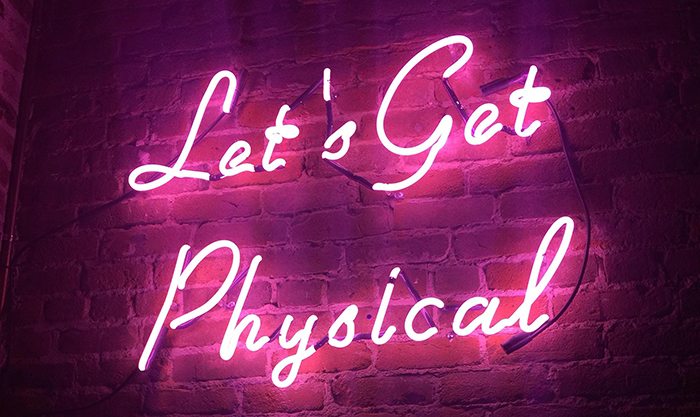According to recent reports, Apple’s investors are urging the iPhone maker to help reduce smartphone addiction among children. While I don’t doubt smartphone addiction may be a thing at the moment, my own usage habits lead me to think this issue will be short-lived.
When I’m at home, my smartphone stays on my desk. I don’t use it as often as I once did. The same is true of my tablet, unless I’m reading single-issue comics.
Why? Despite well-founded concerns about security and privacy, I’ve integrated digital assistants into my daily life.

When I need information, certain services, or want entertainment, I command Alexa or Google to bring it forth. Let there be NPR. Let there be My Little Pony: Friendship is Magic. What does a penguin sound like? Set a timer for the food I’m cooking. Tell me about my commute.
They aren’t perfect. I have to repeat or restate requests at times. Asking for konpa songs or information about world history is a challenge because they have difficulty with Kreyòl and anything outside of very limited English. None of them can pronounce the names of my family members correctly. But for some time now, these corporate-born helper spirits have served me well enough that my thumbs are getting recovery time on evenings and weekends.
My habits have changed. And I’m not alone.
66 percent of the 21,000 participants in the 2018 Accenture Digital Consumer Survey said they use their smartphones less since adopting a digital voice assistant device.
When I access information or entertainment on my smartphone, I am inclined to access the content I originally sought and then fall into wanton digital gluttony. Ooh, look who liked one of my tweets. Attention! I’m somebody. I look, I bask, and then emerge half-an-hour later having inhaled content of varied quality from my stream before I notice what I’m doing. I search for one of the Black Panther movie trailers, watch it, and then spend two hours consuming news and trivia across several comic book multiverses.
Time. Gone.
I’ve long expected photos of people clutching rectangular smartphones to one day look as dated as images of people showing off boombox-sized cordless and mobile phones. Or boomboxes. We’re on the cusp of that change. Don’t misread me as saying that “smartphones are dead.” But I doubt the children of the future will experience the spell of the tactile, graphic user interface in the same way we do now.
As wearables improve and smart objects of all sorts give us access to information, services, and content we will feel less tethered to our devices. Instead, digital ether will suffuse our spaces and we will take less and less notice of the connected devices that hear and deliver. I feel like I have started to make that transition.
For me, this transition to responsive digital ether has coincided with a return to tangible, single-purpose comforts. Quiet paper books. Board games. The charms of these physical objects and refuge from electronic streams and notifications are among the reasons this refreshed appreciation for the tangible makes sense, but consider how the expanding digital ether may contribute.
Digital transactions and interactions consume less time because voice-based user interfaces don’t encourage digital gluttony in the same way as smartphones. And without being tethered to a tablet or smartphone we can more fully experience our physical environment. No more walking around staring at our magic rectangles. The digital ether will be there when we call upon it. Your mirror can teach you a yoga routine, but it isn’t a special mirror. Few devices, if any, will be special. They will just be items in a physical world enchanted by helper spirits.
Those of us involved in direct mail and marketing will want to pay attention as these trends play out over the next few years. The digital ether will spread. With less smartphone use, people like me are also giving less attention to email and the current generation of social media platforms. And I am not alone in diverting more of my attention to physical things. A door is widening for successful communication and engagement through well-crafted, data-informed, tactile print. Pay attention. Get ready. Don’t miss the opportunity.
As a technology that makes computer-generated experiences available over physical environments, augmented reality (AR) will continue to grow as part of the responsive digital ether. It won’t be in 2018, but soon enough glasses and contact lenses we barely notice we are wearing will enable us to access and interact through AR experiences all around us. The same is true of mixed reality (MR) where better wearables will bring virtual objects into regular apparent “contact” with the physical world.
The Accenture survey I mentioned earlier has additional nuggets about where consumer interests may shift in a blended world of digital and physical experiences. Check it out and maybe you’ll get a chance to share your opinions and prognostications with me via email or Twitter. Maybe. Catch me while you can!
Andy Solages connects people and organizations with technologies to improve professional experiences and business results. Andy is a monthly contributor to Print Media Centr’s News from The Printerverse and a regular participant in #PrintChat on Twitter.
Treat yourself to more Andy: Twitter | LinkedIn | andysolages.com













One Response
Well said, Andy